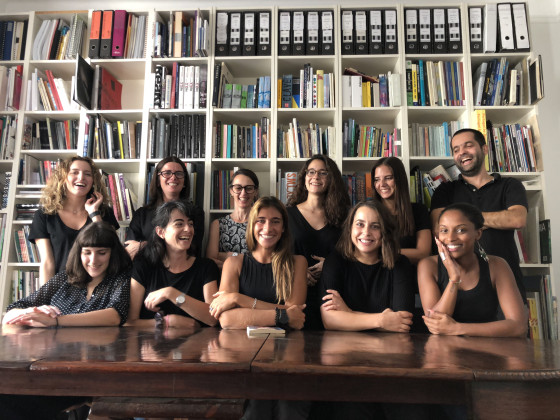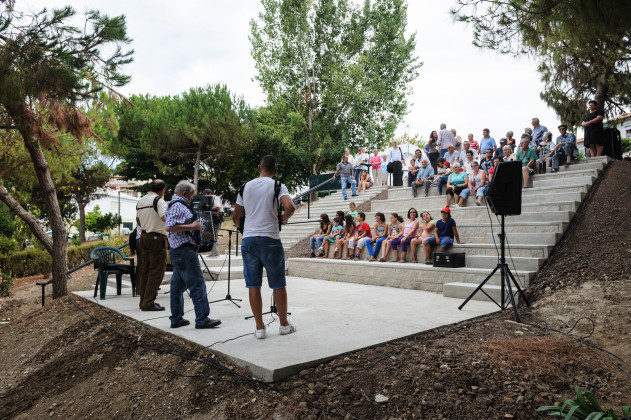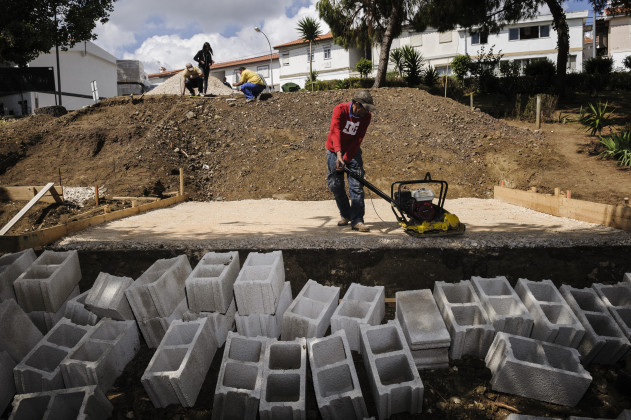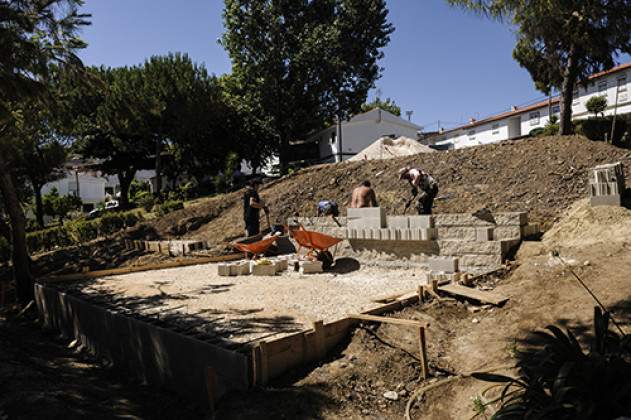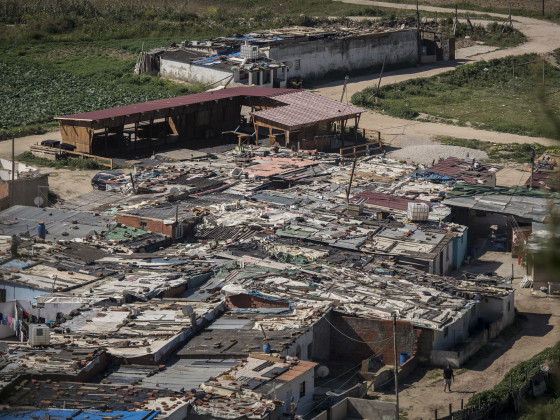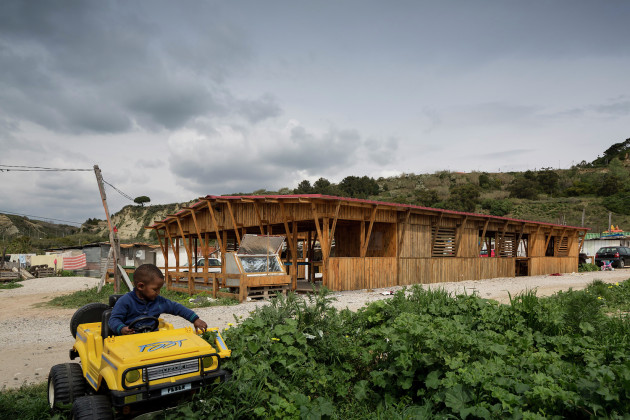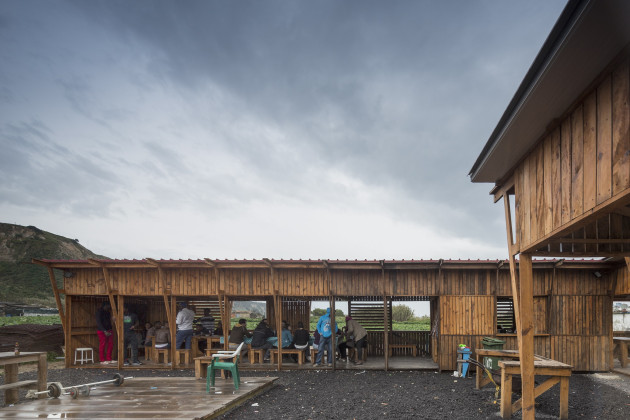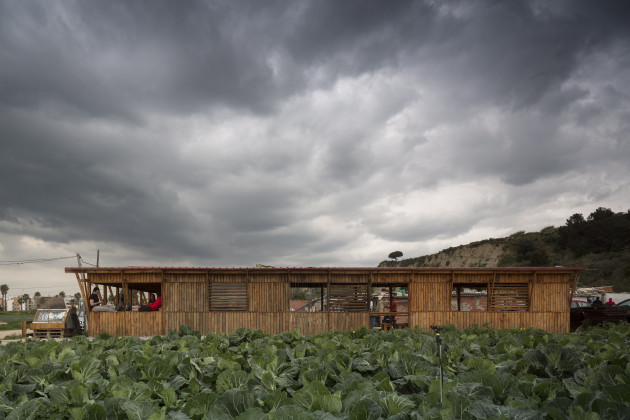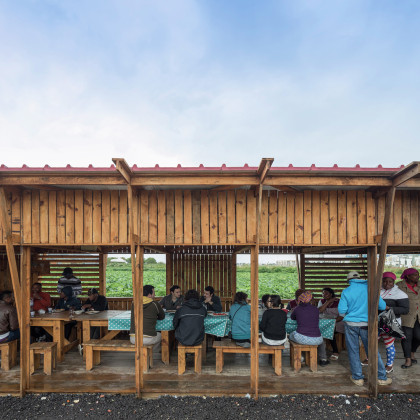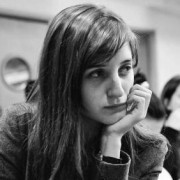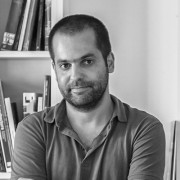No Easy Answers, But All The Right Questions
Sebnem Soher talked with Tiago Mota Saraiva, one of the members of architectural cooperative Ateliermob, about building collective know-how and networks that bring stakeholders together.
Sebnem Soher: We can start with the organisation of ateliermob. I know that it’s not just one studio but a structure, more like an organisation within organisation. Can you tell us a bit how it works?
Tiago Mota Saraiva: Ateliermob is a firm that was founded in 2005. “Working with 99%” is a cooperative, founded in 2016. In fact, the work that we are doing in the cooperative came from ateliermob. After 2011 or after the crisis, we realised that there were a large amount of people needing architectural services but they didn’t have the means to pay for that work. This is how it all started, how we started with this kind of work. In 2016 it made sense to start also an organisation besides ateliermob, also because of some type of work, which is more consultancy. We realised there were much to be done by an NGO, than a conventional, private firm. Now we are much more divided, we know much better which project belongs to one or the other. The studio is doing conventional architectural work and “Working with 99%” is doing more consultancies and also what it is, is being a part of the diverse social movements.
For example, we were invited by our parliament, to talk about the changes in housing laws, subjects like rent regulations. In 99% we also run for national or international fundings. What is different is also the structure. With the 99%, who starts as our client, also wants to jump in with the cooperative. That is also a big part.
SS: People can jump in?
TMS: Yes, people can join the cooperative. For example, if an association wants to do a project with us, they come in; become a part of the cooperative. Because if that happens, the services we give to them are taxed with no VAT. Because we work on the cooperative works.
SS: That was going to be partially my next question. Can you tell us about the commissioning and/or the reaching out processes? For both parts…
TMS: For ateliermob, commission is almost always competition. From the beginning how we acquire work has been public, open competitions. Now we are being called to competitions too, but never to private ones. We have never been invited to a private one. In fact, the private works we had, came from friends, friends’ friends, works such as flat renovation. Sometimes our clients were people, who followed our blog, watched out for one of the projects.
SS: Even your private clients know your practice, your method of working before they come to you.
TMS: Yes, like young people, who follow us on Facebook or Instagram, they read the posts on our website, go to the blog. From the beginning on, we didn’t have a website, a formal website. It’s very difficult to understand our works. You can testify! But on the other hand, it produces daily update. It’s not the usual material though, what we use to update, not the finished images of architecture. Nice images can be too risky, too expensive for people. So we post images from the working site for example. This way of sharing what we do, and this is something we like to enhance, produces the close relations to the people, who we produce architecture for. Also throughout the media we want to step out of that barrier, make it closer.
SS: How does it work when it’s 99%?
TMS: Sometimes it happens, that people just knock at the door and start talking about a problem in their neighbourhood. It starts like that. But it cannot always start like that. In some cases, it starts with us, looking around and seeing a case and think about what we can do. The question is usually, how we can fund it. We also have a very interested team here in the office. For example, we have colleagues, who are especially interested in gender issues. So we started some work with the Lisbon municipality, because in Portugal, gender issue is still not understood very well. We’ll see what will come out of that work. At the same time, we do a huge work on accessibility. That one started with a competition. We won a competition here in Lisbon. Our duty is now, to design 100 pedestrian crossings and 30 bus stops. For that project, we are working very close with the municipality.
SS: That brings us to my next question. When I was looking at your past works, I realised there are so many different processes behind each. Like Terras da Costa, Community Kitchen started with an academic workshop. There’s also Prodac interventions, which is completely different. Viva Cidade project in Aveiro, is another story.
TMS: Well it doesn’t always start with funding. Usually in the projects, we have an idea first and we start working with the people and then it leads to different funding solutions. For example, the kitchen of Terra da Costa is a long story, that I always say, of missing funding, not getting funding. We applied to a lot of places and we always got a “No!”. At a certain point, in one of the applications we sent, someone from the jury saw the work and the conditions. She was from the Gulbenkian Foundation and wanted to learn more about the project. But until that point we tried everywhere and everyone. A lot of no’s. Now I think either we are better in applications or people realised that we can do impossible things. This must be the reason why we are much more successful now in applications than we were before.
SS: Is it also a matter of trust? I mean from both parties, the communities you work with and the institutions which provide funding…
TMS: That is a bit tricky. Because sometimes the communities, when they come for help or with a request, they think we can do anything. First thing we have to do is normally, to lower down the expectations. Because when they see us on TV or when they see the processes, they always get the good impression, the good picture. But when I tell them, it took us five years to realize the project, it changes. For us, it’s important that they know the path is not always evident and that sometimes we lose, or it takes longer than expected. The trust also comes from this process.
SS: Are there things you prioritise, like participation? In some of the projects you realised, it seems like there’s a mutual effort from different sides of the project.
TMS: I wouldn’t consider participation as dogma. It depends on the project and also how one defines participation. There are projects, where it makes sense and others where it doesn’t. There might be a community, where the members are not interested in participating, or where participation implies discussions on the needs but not in co-design, for example. What we are very much focused is, to change people’s lives for the better. That is like a constant, always there, as a goal.
SS: So when we jump a little bit further in the questions and come to the discipline of architecture in general… How useful do you think the architectural knowledge is, in making people’s lives better?
TMS: Everyone deals with architecture on a daily basis, at your home, at your work and also in public space, when you drop your kids to school, on your way. Architecture and urban design are always around. In that sense, you can always make people’s lives better with short improvements.
When the economic crisis started in Portugal, the architects started to complain that there was no architectural work and everybody was talking about leaving and finding new opportunities outside. On the contrary, we thought: we’re staying, there’s a lot to do here. The question is not the absence of work but the capacity for people to pay for our services. That’s how we started the project “working with the 99%”. First identifying the communities with whom we could work, settle with them the priorities and then, finding ways to finance it. We knew they could not pay directly but there was funding available for the work. Architecture is something that should be available to all. The access to a properly designed space, either domestic or public, is a right no one should be prevented from having. That is one of our principles. That said, it does not always imply constructing, it can be, as the case of one of our first project under the “Working with the 99%”, in PRODAC, a self-build neighbourhood in Lisbon, to use our tools to do all the paper work needed for houses’ legal regularisation.
SS: Do you see yourselves as a part of a larger network? A network of international architects who have the similar concerns or a network of different disciplines in your own practice?
TMS: For example, we don’t build. We only associate people, who do. It can be a contractor, it can be a collective like Colectivo Warehouse, it can be a different actor. For us, it’s important to have this know-how gathered in the project. On the other hand, we never think of architecture as it used to be defined. For me, personally, it’s becoming more and more difficult to think about the figure of the architect as a master mind. The practice has become more and more collective, with new and different know-hows (engineers, with different layers of new information to cross-over etc). But I think architecture is still facing some difficulty in facing the idea of collectiveness and that is a huge difference in our practice.
For example, the office was founded by me and Andreia (Salavessa), but it does not have our name and I would like it to continue without us. The idea of an office is the outcome of the ideas of the people, that are in. So, it means it can change through time according that form the collective. That is a model, which you can see in huge, multinational companies, which sustain after the founders are long gone. I would like to think of the office as a self-sustaining, continuous entity, although with a different perspective, inclusive political one, that the multinationals.
SS: How is ateliermob with definitions? How would you define your practice? I read an old interview you made in 2012 with Manuel Graça Dias and Ana Vaz Milheiro. There you mentioned a translation problem regarding social or socially engaged architecture and variety of terms used such as architecture of causes or of emergency…
TMS: I don’t like it much, because the term “social architecture” recalls the idea, that there is a non-social architecture. In the opposite case, meaning in a non-social architecture, there’s no architecture. Sometimes I think that we can be actors or interventions, people who always try to stretch the boundaries of our profession and using always a lot of our skills. Not ours personally, but ours from the profession, we use our tools and ask ourselves: What can we do as architects to solve this problem?
SS: Within this definition, the definition of the problem itself becomes important. What you see as a problem defines perhaps?
TMS: Yes. The question is, following the good questions. If you start something, by answering a question, that doesn’t make sense, you won’t get anything interesting at the end. We learned a lot about it, during competitions. We have been asking, what the real question is in one space, so that we could start solving it.
SS: A big part of your practice seems to be also communication. The conventional architecture education provides a completely different set of skills to the candidates.
TMS: We have to change our ways of communication a lot from an architect in the municipality to the general assembly of the inhabitants of a neighbourhood. Because we want to be understood, not to appear as experts that say unquestionable opinions. For that, we have to manage to connect and, for example, avoid the architecture jargon, if not we’ve just creating barriers. There’s a story I normally tell and that I really like: Once, we were in a general meeting in one project, here in Lisbon, when a member of the association, who knew all the legal processes and terms, was explaining an aspect of the project. After a while, they objected him and wanted me to speak, because they knew me already and they said, they were understanding the architect!! I was very happy.
SS: This is all different than we usually see as the representation of the architect. Even the way you represent your work, not with nice, clean images but through the process, with different, incomplete phases.
TMS: Let me add this: It’s also important to have these nice pictures, taken by good photographers. The process might be hard and dirty. But when it’s finished and you see an interpretation of someone, who is coming from a more traditional architecture photography, it can really change the impression… For example, we work with Fernando Guerra for the reconstructions of the houses in the fire area. His pictures have a great role in the internationalisation of the community kitchen, also.
SS: You are also working in renovations of the houses, damaged during the Pedrógão Grande wildfires. We already spoke about your approach to spatial problems and the way you believe; those problems can be solved through proactive interventions. What do you find more important, spatial interventions or policy making?
TMS: Well, definitely, both. We are now focusing on policy making through the cooperative, on consultancy in policy making. We know that today’s trends might not be the ones of tomorrow in architecture design but it’s important, on the legal side, to make sure important principles, as people’s right to have access to architecture and properly design and thought territory, is guarantee. Despite the trends. It shouldn’t be only lawyers discussing the legal frameworks, architects should think about those with the lawyers.
SS: My last question will be a perhaps a more personal one. Do you ever find yourself in a more skeptical position, regarding architecture and your practice? For some time now, the social turn in architecture is –let’s say- in fashion. A lot of publications, exhibitions focus on this topic. Let me remind you the same interview, where you said, that this would be the new global agenda of architecture. And it did! From the previous Venice Biennale, the one in 2016, to The Routledge Companion to Architecture and Social Engagement, published this year in May… Is it still valuable to have these discussions in the professional field?
TMS: Yes, I think it is. I am getting worried about the growth of the far right in different countries. In the city and the public space, you can answer back to the simple answers that they give to people. Like when unemployment and low wages or poor public services are always identified with migrations, foreigners. This is only the easy answer and you can argue with that in the public space. I think this is one of the fundamentals, just like the commons are. There are a lot of debates about it now.
At the same time, the “low-cost”, the “temporary” were some of the good ideas, that capitalism took the leadership of. The fact that a small project, with very strong social aspects, could change into a part of a gentrification process is very easy. The adaptability of this doctrine is amazing. For that reason, you have to always be very conscious of what you are doing and demanding it. Sometimes you even have to be the leader of your idea, so that it doesn’t become a total disruption of that. There’s always a very thin line between. It can easily become dematerialised and depoliticised, when it is only artistic or because “I wanted it and that’s it”. You can define the objectives from the beginning and always stretch a little bit more.
SS: Where do you stand in those debates regarding the urban commons? Can we con-sider those as tools for stretching the limits?
TMS: Yes, we can and should use those tools. We believe architecture as an important political role that is inherent to the practice. And we should not prevent from making a stance. As I said, when we see the far right growing in different countries, it is a political problem. And architecture has a role in this debate. We produce space that needs, and must be, a democratic one. For example, public space: should not promote spatial segregation in any form. When we talk about the commons we speak of a public space that is designed in order to create dialogue between different groups, that allows all to feel comfortable, that deals with gender issues, etc.
The same can be extended for housing: what type of houses and neighbourhoods are we designing and to whom. How are they sewed to the existing urban fabric?
Related Content:
-

Social Housing in Ibiza
-

Setting the Tone
-
Handmade Inspirations
The world agenda full of crises makes it necessary for architectural practice to take a new look at the built and natural environment, and to develop new perspectives
-

A Neighborhood within a Building
-

Reclaim the Kitchen
-
Educational Possibilities in Urban Refurbishment
Critical Concrete, concentrating on the refurbishment of socially relevant spaces of Porto suburbs, shows us how to be super cool by being super normal
-

Open Call for Emergent Practices of Social Architecture
-
Reframing the Social
Hülya Ertaş talked to Florian Koehl on the social agenda of architects today and the alternative ways of realizing projects within the existing social and economical framework
 19.12.2018
19.12.2018



